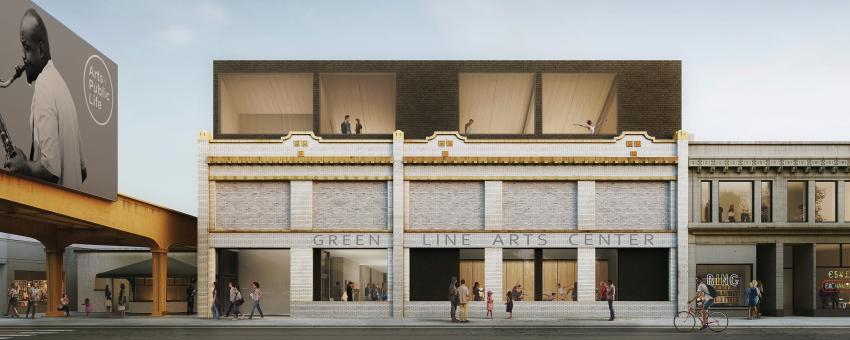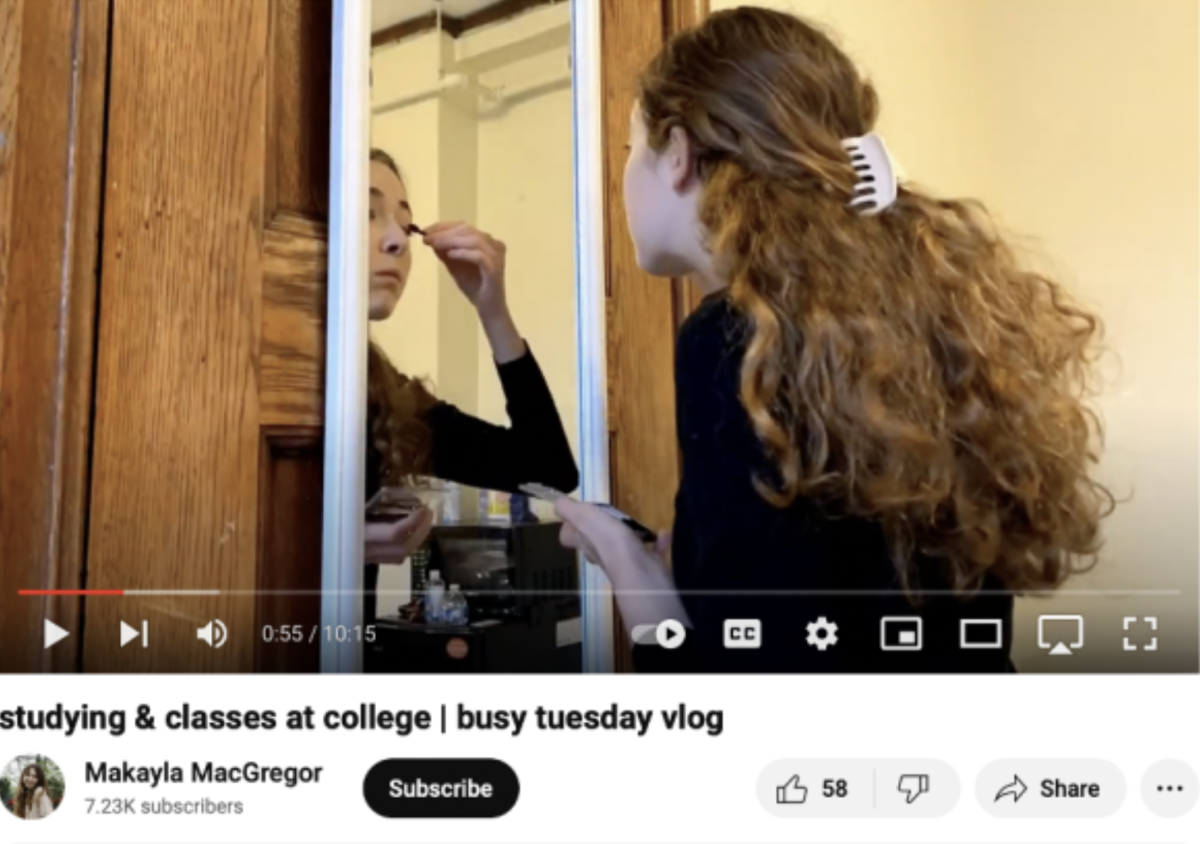Starting anywhere near the University of Chicago, if you walk a few blocks west on 55th Street you will quickly enter Washington Park, the University’s immediate western neighbor.
Culturally and economically speaking, it is a different planet from Hyde Park. Washington Park—where residents make an average of $20,000 annually and where the local Burke Elementary serves 86 percent low-income students—has a deep cultural history. The neighborhood has hosted a multitude of communities, from Irish to German to Black.
These days, however, Washington Park hosts a significant number of boarded-up buildings, wide, empty thoroughfares, and proliferating vacant lots. The Arts Block, on Garfield Avenue, is a University attempt at urban renewal in a neighborhood whose economic problems it indirectly helped to create.
Turning off of Cottage Grove, a small collection of buildings creates a “one of these is not like the other” image. In Bing Art Books, patrons can browse for rare art and art-industry volumes before grabbing a cup of coffee or a bite to eat at the neighboring Currency Exchange Cafe. Both stores are the investments of UChicago professor Theaster Gates, a Visual Arts professor and the former director of the University’s Arts and Public Life Initiative. Pedestrians can take advantage of the recently opened public garden on a sunny day, or step out of a blistering Chicago wind and into the nearby art gallery to peruse the current installation and upcoming programming.
Across the way is a construction site that has been the subject of a lot of discussion. One of the oldest “L” stops in the city, a 1920s era Green Line station, is set to be reimagined as the Green Line Arts Center, punctuating the businesses already present and becoming the keystone of the rapidly shifting block.
In a statement to The Maroon, a University spokesperson described the Arts Block as a collaboration with local residents, with funding coming from a variety of public and private sources.
“The Arts Block is a vibrant collection of cultural and commercial spaces on historic Garfield Boulevard combining University-led initiatives, programming produced by cultural organizations, and both philanthropic and private investments,” the statement reads.
The emphasis on collaboration reflects the University’s awareness that it is an economic giant on the mid-South Side, a role which it has embraced with varying levels of enthusiasm over the years.
The University is the largest employer on the South Side, making it by definition an “anchor institution:” An entity that is tightly interconnected, historically and economically, with an area, exerting a corresponding strong force on the life of the communities close by.
The University has come to emphasize its identity as an anchor on the South Side after a long history of ambivalence or even hostility toward the people living around Hyde Park. As a result, many residents of neighborhoods like Washington Park or Woodlawn, to the immediate south of campus, distrust the institution.
For a great deal of the 20th century, University administrators took a “bubble” approach to real estate development, trying to make Hyde Park desirable to students and faculty by keeping out lower-income, frequently Black, residents. In the 1930s and 40s, for example, the University indirectly funded advocacy for racially restrictive housing covenants (known facetiously by real estate owners as the “University of Chicago Agreement to Get Rid of Negroes”) in Hyde Park until the United States Supreme Court declared these agreements unconstitutional in 1948.
In a 1949 issue of the UChicago Law Review, William Ming wrote a brief about the “Restrictive Covenant Cases.” He wrote that the “covenants are directed primarily at Negroes, but they affect other groups as well, and they have been formidable devices for the maintenance of the ‘walls’ around the ghettos.”
A UChicago-supported “relocation” program also uprooted 4,000 majority-Black families from Hyde Park and forced them to settle elsewhere, many of the victims of these resettlements went where other people affected by redlining had gone: to Chicago’s “Black Belt,” a band across Southern Chicago where African-American citizens could find homes after being redlined out of places like Hyde Park. Washington Park was one of the neighborhoods to join the Belt.
Professor Julian Levi justified the University’s support for this kind of development policy in 1954, saying “the only standard you ought to apply to this is whether the University of Chicago as an academic entity requires a compatible community”—in other words, the University need not be responsible to the surrounding community from a development perspective.
That community, Levi said implicitly, was wealthy, white, and University-affiliated. Six years after the racially biased housing covenants were declared illegal, his statement represents what was perhaps the peak of the University’s attempt to isolate itself from its immediate community.
Levi’s outlook, however, was soon to go out of fashion, at least on the surface. The 1960s and beyond witnessed a series of institutional and student-based initiatives for engaging with the mid-South Side: SWAP, for example, the Student Woodlawn Area Project, was founded in 1964 and paired Woodlawn secondary school students with University students for academic support; the program is still operational today as the rebranded Neighborhood Schools Program (NSP). The University Office of Civic Engagement, a descendant of older institutions like the School of Civics and Philanthropy from 1910, has made it its mission to promote a healthy University–South Side relationship and to get students out of Hyde Park.
More recently, the University has supported affordable housing with subsidies up to $10,000 for University staff moving to Woodlawn, and the UChicago Local Initiative works to get contracts for nearby businesses and entrepreneurs.
Residents remain wary of the University’s power as a developer and economic force on the South Side.
Late last year, Woodlawn resident and community organizer Jeanette Taylor deemed the University’s reputation among locals “decidedly mixed.”
The University heavily lobbied for the Obama Presidential Center to come to Chicago, and specifically the Jackson Park or Washington Park areas. In an interview with CityLab last fall, Taylor was skeptical at the University’s motivation in advocating for projects like the Presidential Center, or the Arts Block.
“How many times have we been played about everything that comes to this community that’s supposed to be for us, that’s not supposed to push us out?” she asked.
The Arts Block is already attracting development in the area. Last November, the KLEO Community Life Center invested $23.5 million on subsidized artist housing in Washington Park, betting that a combination of new resources and cheap housing would lure Chicago creatives to Washington Park. Forty-nine of the building’s 58 units are set aside for artists making less than $33,180 per year, an income still more than 50 percent higher than the median Washington Park income. The City of Chicago also contributed about $8 million to the development, which broke ground late last year, in the form of tax credits. It sold the building site—worth about $925,000—to KLEO for $1.
The University hopes to set a new precedent for its relationship with local communities through the Arts Block and projects like it, envisioning itself as a “socioeconomic driver” for the area.
On its website, the University Office of Civic Engagement declares, “Realizing the potential of Garfield Boulevard as an economically stronger and vibrant cultural corridor is a steadfast goal shared by the residents of Washington Park and the University of Chicago.”
Cecilia Butler, the president of the Washington Park Advisory Council, agrees that investment in Washington Park is a necessity, but feels the University does not do enough to meaningfully incorporate Washington Park residents into Arts Block programming and planning. She noted that this may be because not all Washington Park residents are internet connected, and do not receive mostly-electronic University communication as a result.
“Anybody in our community would have to be crazy to not support improvement, but we don’t necessarily have to love it,” Butler said. “[But] the University has not publicly invited Washington Park to be a part of the Arts Block. The only way to advise the community about what’s happening…is to go door-to-door,” she said.
Butler said that if the University is serious about involving Washington Park residents in the development, administrators would reach out to community leaders to coordinate with them, either through the Washington Park Advisory Council or through the Resident’s Advocacy Council.
“If the University truly wants to work with the community, they need to work with the people doing the work [already], and that’s us,” she said.
Development on the Arts Block is moving forward: This November brings a celebration of the Green Line Performing Arts Center, opening this fall, and the renovated former CTA station will open this spring as a welcome center and incubator for local businesses.
This past February, resident and local reporter Sam Cholke observed on Twitter that a building which had been set for a cultural project still in the planning phases was no longer standing. The University had emphasized that it would preserve the now-collapsed terra cotta facade of the building.
“U of C's new arts center in Washington Park is confused,” he wrote. The entire structure had been leveled to the ground—the building-front, which renderings showed would be preserved, nowhere to be seen.
The University told The Maroon on Tuesday that the building collapsed due to winter weather conditions, and the University is saving what materials it can.
“Unfortunately, winter conditions destroyed most of the structural integrity of the building and collapsed the roof. As a demonstration of its commitment to preserving the rich historical and cultural legacy of the Arts Block, the University was able to salvage as much of the original facade as possible and hopes to see some or all of these portions incorporated into the structure that will be built on the site,” the statement reads.
This article is part of The Maroon’s 2018 Orientation Issue, which appears in print during O-Week. You can view all of our Orientation Issue coverage here. If you are interested in joining The Maroon this fall, please find information here.








